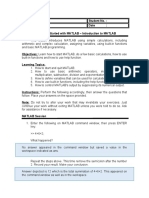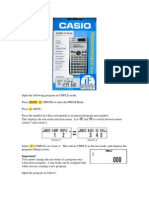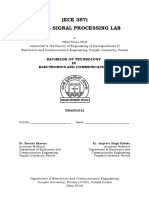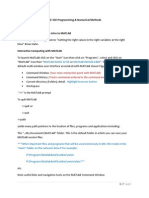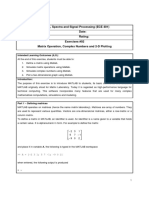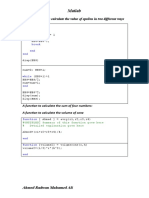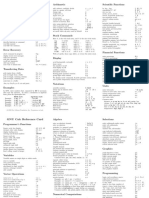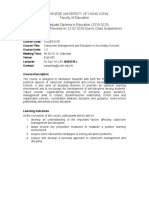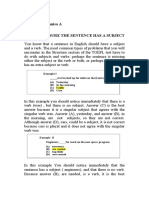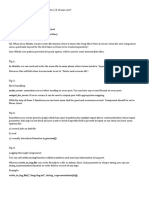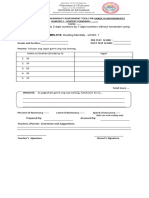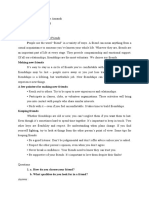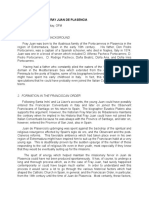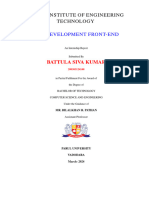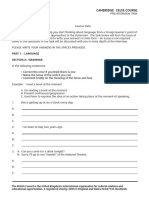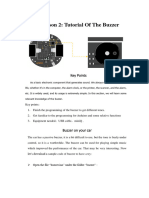0% found this document useful (0 votes)
219 views8 pagesCalculator Program New PDF
1. The document describes four programs for a Casio graphing calculator.
2. Program 1 uses the quadratic formula to find the vertex, discriminant, and roots of a quadratic function. Program 2 solves systems of simultaneous linear and quadratic equations.
3. Program 3 uses the cosine formula to find the angles and area of a triangle given three sides or two sides and the included angle.
4. Program 4 factors cubic polynomials using the factor theorem to find factors of the form x-a.
Uploaded by
Kwong DavidCopyright
© © All Rights Reserved
We take content rights seriously. If you suspect this is your content, claim it here.
Available Formats
Download as PDF, TXT or read online on Scribd
0% found this document useful (0 votes)
219 views8 pagesCalculator Program New PDF
1. The document describes four programs for a Casio graphing calculator.
2. Program 1 uses the quadratic formula to find the vertex, discriminant, and roots of a quadratic function. Program 2 solves systems of simultaneous linear and quadratic equations.
3. Program 3 uses the cosine formula to find the angles and area of a triangle given three sides or two sides and the included angle.
4. Program 4 factors cubic polynomials using the factor theorem to find factors of the form x-a.
Uploaded by
Kwong DavidCopyright
© © All Rights Reserved
We take content rights seriously. If you suspect this is your content, claim it here.
Available Formats
Download as PDF, TXT or read online on Scribd
/ 8






